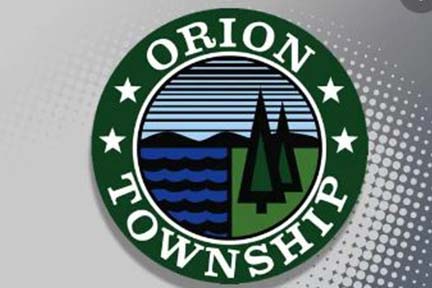| With our last DNR news digest of the year, we wish everyone a peaceful holiday season with family, friends and plenty of time outdoors. We’ll be back in 2025!
See other news releases, Showcasing the DNR stories, photos and other resources at Michigan.gov/DNRPressRoom.
Larger, higher-res versions of some of the images used in this email (ice cream cone, winter trail and snowy forest) are available in the DNR’s online photo gallery, and others (e-bike and snowy owl) are available in this folder.
 From beachside concessions and food trucks to farming activities and vending machines, the DNR Parks and Recreation Division offers exciting opportunities for small businesses to set up shop in state parks. From beachside concessions and food trucks to farming activities and vending machines, the DNR Parks and Recreation Division offers exciting opportunities for small businesses to set up shop in state parks.
By collaborating with local entrepreneurs, the DNR can offer a wider range of services that help elevate visitor experiences. Those can include retail and food services, equipment rentals, water park operations, guided tours and more.
Through a competitive bidding process, the DNR selects qualified businesses to provide these services. Successful bidders can secure contracts lasting up to seven years. These are partnerships that support local economies and create stable, long-term relationships.
“We take a lot of pride in offering opportunities to establish small businesses in state parks,” said the DNR’s Lori Green, who co-manages commercial land use in state parks, trails and waterways. “We encourage local businesses to consider expanding their operations through the bidding process.”
Currently, there are several business opportunities up for bid, including food trucks, beach concessions, farming activities, shuttle services, a riding stable and more. Visit Michigan.gov/StateParkConcessions to see a list of current opportunities and deadlines.
Questions? Contact Lori Green or Elissa Buck. |
 Back in the 1800s, hunters engaged in a holiday tradition known as the Christmas “side hunt,” where teams competed to bring back the largest pile of feathered (and furred) game. When the conservation field began to emerge in the late 1800s – and hunters, bird watchers and scientists were developing a growing concern for declining bird populations – other options emerged, too. Back in the 1800s, hunters engaged in a holiday tradition known as the Christmas “side hunt,” where teams competed to bring back the largest pile of feathered (and furred) game. When the conservation field began to emerge in the late 1800s – and hunters, bird watchers and scientists were developing a growing concern for declining bird populations – other options emerged, too.
On Christmas Day 1900, Frank M. Chapman, an early officer of the National Audubon Society, proposed a new holiday tradition: a “Christmas Bird Census” to count, rather than hunt, birds during the holidays. This marked the beginning of the Audubon Christmas Bird Count!
In its first year, 27 volunteers conducted 25 CBCs across locations from Toronto to California, tallying 90 bird species. This year marks the count’s 125th year, making it the longest-running bird census in the hemisphere. Dec. 14 to Jan. 5 every season across the Americas, tens of thousands of volunteers participate to gather critical data that helps scientists protect birds and the places they need.
That information allows researchers, conservationists and wildlife agencies to study long-term trends in bird populations across the Americas. When combined with other surveys, such as the Breeding Bird Survey, these data provide insights into how bird populations have changed in time and space over the past century. Audubon and other organizations use these findings to guide conservation efforts for birds where they are most needed.
In Michigan, dozens of local Audubon chapters organize CBCs. Many counts include guided bird walks, making them great opportunities for new birders to gain experience and connect with others who share their interest. The Christmas Bird Count is a prime example of how everyday observations from first-time volunteers and experts alike can make a big difference.
To get involved in this year’s Christmas Bird Count, visit the Audubon website. You also can learn more about Michigan birds and community science opportunities like the CBC at MI Birds, a public outreach and education program created by Audubon Great Lakes and the DNR.
Questions? Contact Erin Ford at 313-820-0809. |
 Winter is off to a snowy start, providing lots of opportunities to embrace the elements and take to the trails. It’s also a good time to remember ways to ensure your outdoor exploring is as safe and enjoyable as possible. Here are a few reminders before you head to your favorite pathway: Winter is off to a snowy start, providing lots of opportunities to embrace the elements and take to the trails. It’s also a good time to remember ways to ensure your outdoor exploring is as safe and enjoyable as possible. Here are a few reminders before you head to your favorite pathway:
Snowmobiling
Buy your trail permit, check conditions. Michigan’s 6,000-plus miles of DNR-designated snowmobile trails, public roads and public lands (only where riding is authorized) are open Dec. 1-March 31, and trail grooming occurs when there is enough snow on the ground. Purchase your trail permit and find maps at Michigan.gov/Snowmobiling. Be sure to check trail reports and trail closures while planning your excursion, and follow Ride Right safety precautions, including staying on the right side of the trail.
ORV riding
Know where you can go. Off-road vehicle riding is allowed on all county roads that are open in the summer as well as all DNR-designated multiuse trails; note that ORV trails in the Upper Peninsula are marked by letters. Snowmobile-only trails, however, are closed to ORV use Dec. 1-March 31, and snowmobile trails are identified by numbers only on diamond-shaped signs.
In addition, highway rights-of-way are closed until May 1 and therefore are not open to ORVs. (These are areas where the trail runs on the side of state and U.S. highways allowing a trail to connect.) Always be aware of icy sections, especially on morning and evening rides, and ride in a manner that minimizes trail damage given that some trails’ terrain may be soft. |
In-the-woods exploring
Wear blaze orange, practice trail etiquette. With the new extended late antlerless firearm season Jan. 2-12 in the southern part of the Lower Peninsula, as well as archery deer hunting season remaining open until Jan. 1, be sure to wear your blaze orange while on the trails. For more details on these seasons, see Michigan.gov/Deer.
Also know when to yield and how to interact with other trail users by practicing trail etiquette. Remember that courteous communication is often the safest way to pass when interacting with others on the trail. Also stay on marked trails, respect trail conditions and closures, and leave no trace – pack it in, pack it out, and if you see litter, please pick it up.
Questions? Learn more at Michigan.gov/DNRTrails or contact Tim Novak at 517-388-8347.
 Earlier this year, allowable use of Class 1 electric bicycles on state-managed, nonmotorized bicycle trails/pathways expanded following approval of a proposed DNR land use order. Earlier this year, allowable use of Class 1 electric bicycles on state-managed, nonmotorized bicycle trails/pathways expanded following approval of a proposed DNR land use order.
As 2024 winds down, the DNR is looking to trail users to reflect on this land use order change and to share their thoughts on both riding e-bikes and interacting with e-bike users on state-managed trails.
The short e-bike survey will help the DNR gather public input on the land use order, which went into effect in August on state-managed trails with the exception of those located on state wildlife or state forest lands.
The approved DNR land use order expanded operation of Class 1 e-bikes so that they are allowed on improved-surface trails such as linear trails (paved or gravel/asphalt) as well as natural-surface, nonmotorized bicycle trails/pathways in state parks and recreation areas and on state forest pathways and roads.
In addition, the change allowed – for mobility purposes – operation of Class 2 e-bikes, which are throttle- and pedal-assisted and can travel up to 20 miles per hour, on those trails/pathways open to Class 1 e-bike use, as long as a cyclist has applied for and received a no-cost permit to do so. Prior to the land use change, Class 1 e-bikes were only allowed on improved-surface trails and roads on state-managed land.
Read more about the land use order change in this Showcasing the DNR article. Visit Michigan.gov/DNR/Ebikes to learn more and to access the survey, which will remain open through early summer 2025.
Questions? Contact Tim Novak at 517-388-8347. |
 Michigan is transforming into a winter wonderland, bringing thrilling opportunities for bird enthusiasts to more easily spot and hear owls. Each winter, our state becomes a temporary home for remarkable visitors from the Arctic tundra, such as the majestic snowy owl*. This northern species doesn’t visit us in great numbers every year, making its presence a rare treat for birders lucky enough to spot one. Michigan is transforming into a winter wonderland, bringing thrilling opportunities for bird enthusiasts to more easily spot and hear owls. Each winter, our state becomes a temporary home for remarkable visitors from the Arctic tundra, such as the majestic snowy owl*. This northern species doesn’t visit us in great numbers every year, making its presence a rare treat for birders lucky enough to spot one.
Snowy owl populations fluctuate greatly each year, based on the availability of their summer prey: lemmings. When lemmings are plentiful, snowy owls can have a successful nesting season in the Arctic and produce a lot of healthy chicks. This boom in population can cause an “irruption” in the winter, when snowy owls are seen far outside of their usual winter range and in greater numbers. In past irruption years, snowy owls have been spotted in Florida and Hawaii! This year, there has been an early push of snowy owls south into Michigan and across the Great Lakes region, which is promising.
Winter also provides a chance to marvel at Michigan’s year-round residents, like the great horned owl and eastern screech owl. Amid leafless trees and snow-covered surroundings, these nocturnal creatures are often easier to spot and hear. Their haunting calls echo through still, winter nights, offering a magical experience for those who venture out to find them.
Although spotting owls is a rare occurrence, it’s part of what makes winter birding so special. Check out MI Birds’ blog, Enchanting Owls: Your Guide to the Great Lakes’ Winter Birds, for tips on where and how to responsibly observe these captivating creatures. Then bundle up, head outdoors and enjoy the wonders of winter birding in Michigan!
This story is brought to you by MI Birds, a public outreach and education program created by Audubon Great Lakes and the DNR. MI Birds aims to deepen all Michiganders’ engagement in the understanding, care and stewardship of public lands that are important for birds and local communities.
Questions? Contact Erin Ford at 313-820-0809.
*This picture of a snowy owl in Huron County, Michigan, is courtesy of Lauren Bunker/Audubon Photography Awards. |
 See more pictures by Michigan state parks photo ambassadors at Instagram.com/MiStateParks. For more on the program, call Stephanie Yancer at 989-274-6182. (This photo is by Sarah Goodwin, for the Michigan DNR, at Porcupine Mountains Wilderness State Park in the western Upper Peninsula.) See more pictures by Michigan state parks photo ambassadors at Instagram.com/MiStateParks. For more on the program, call Stephanie Yancer at 989-274-6182. (This photo is by Sarah Goodwin, for the Michigan DNR, at Porcupine Mountains Wilderness State Park in the western Upper Peninsula.)
|





